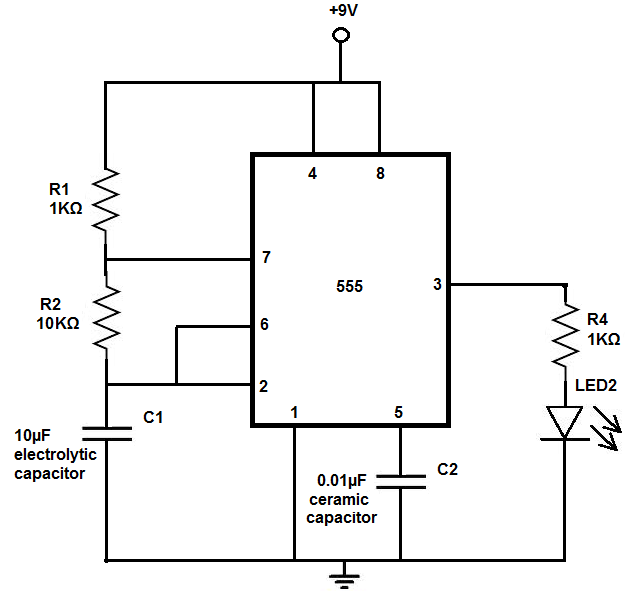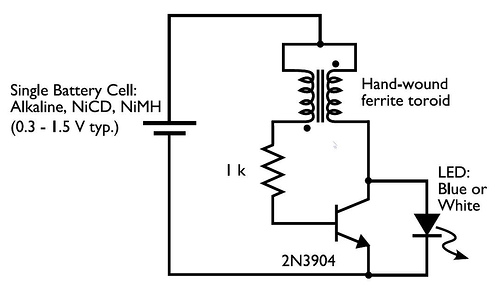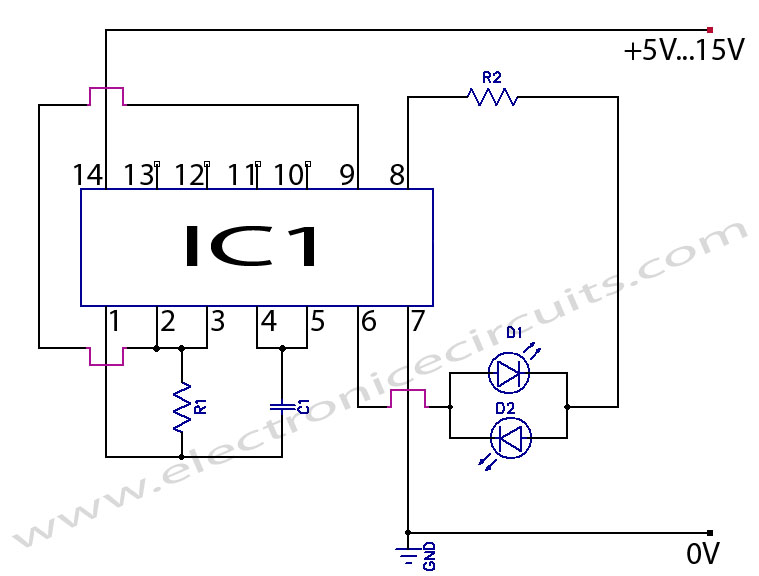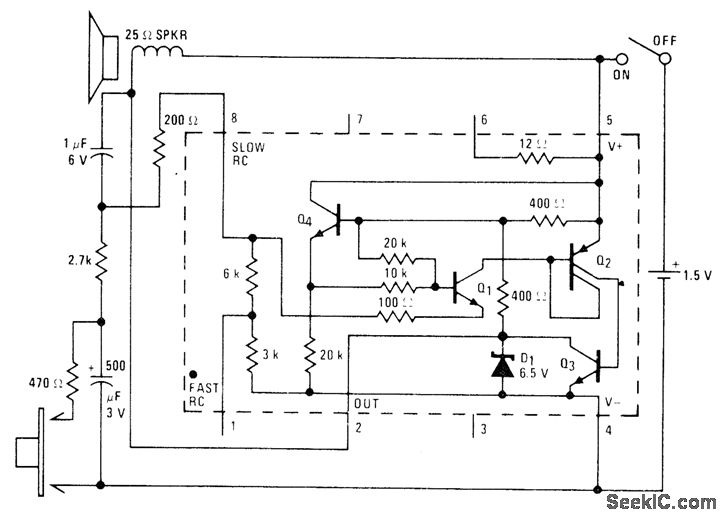
SEQUENTIAL AC FLASHER

This circuit utilizes a ring counter consisting of Q3, Q4, and Q5. Q2 functions as an oscillator that sequentially triggers the SCRs Q3, Q4, and Q5. When an SCR is activated, a 0.2 F capacitor facilitates commutation, turning off the preceding stage. Triacs Q6, Q7, and Q8 manage the operation of lamps 1, 2, and 3, respectively.
The described circuit operates on a sequential triggering mechanism using a ring counter configuration. The primary components include silicon-controlled rectifiers (SCRs) Q3, Q4, and Q5, which are arranged to create a ring counter. This configuration allows for a cyclic operation where each SCR is triggered in succession. The oscillator, represented by Q2, generates a clock signal that initiates the triggering sequence.
The 0.2 F capacitor plays a crucial role in the commutation process. When an SCR is triggered, the capacitor discharges, providing the necessary energy to turn off the previously activated SCR. This ensures that only one SCR is conducting at any given time, maintaining the integrity of the sequential operation.
The triacs Q6, Q7, and Q8 are employed to control the power supplied to lamps 1, 2, and 3. Each triac is connected to the output of the corresponding SCR, allowing it to turn on the respective lamp when the associated SCR is activated. The use of triacs enables efficient control of AC loads, making the circuit suitable for applications such as lighting control systems.
In summary, the circuit effectively combines a ring counter with SCRs and triacs to achieve a controlled sequential operation of multiple lamps. The design ensures that only one lamp is illuminated at a time, providing a visually appealing and energy-efficient lighting solution.This circuit uses a ring counter made up of Q3, Q4 and Q5. Q2 acts as an oscillator which triggers the SCRs Q3, Q4 and Q5 in sequence. When an SCR fires, a 0. 2 F ca-pacitor provides commutation, shutting off the previous stage. Triacs Q6, Q7 and Q8 control lamps 1, 2 and 3 respectively. 🔗 External reference
The described circuit operates on a sequential triggering mechanism using a ring counter configuration. The primary components include silicon-controlled rectifiers (SCRs) Q3, Q4, and Q5, which are arranged to create a ring counter. This configuration allows for a cyclic operation where each SCR is triggered in succession. The oscillator, represented by Q2, generates a clock signal that initiates the triggering sequence.
The 0.2 F capacitor plays a crucial role in the commutation process. When an SCR is triggered, the capacitor discharges, providing the necessary energy to turn off the previously activated SCR. This ensures that only one SCR is conducting at any given time, maintaining the integrity of the sequential operation.
The triacs Q6, Q7, and Q8 are employed to control the power supplied to lamps 1, 2, and 3. Each triac is connected to the output of the corresponding SCR, allowing it to turn on the respective lamp when the associated SCR is activated. The use of triacs enables efficient control of AC loads, making the circuit suitable for applications such as lighting control systems.
In summary, the circuit effectively combines a ring counter with SCRs and triacs to achieve a controlled sequential operation of multiple lamps. The design ensures that only one lamp is illuminated at a time, providing a visually appealing and energy-efficient lighting solution.This circuit uses a ring counter made up of Q3, Q4 and Q5. Q2 acts as an oscillator which triggers the SCRs Q3, Q4 and Q5 in sequence. When an SCR fires, a 0. 2 F ca-pacitor provides commutation, shutting off the previous stage. Triacs Q6, Q7 and Q8 control lamps 1, 2 and 3 respectively. 🔗 External reference





